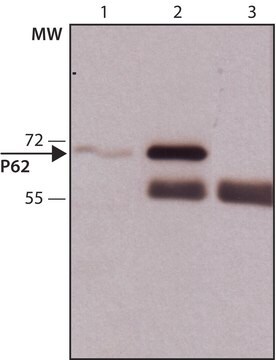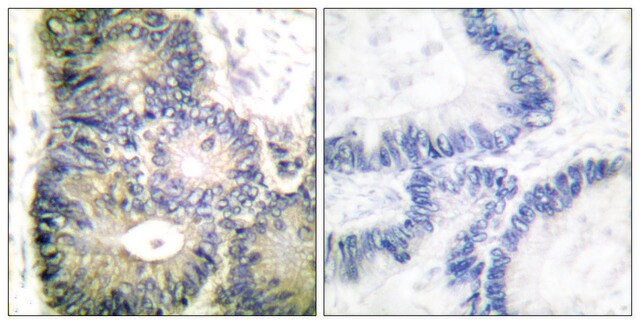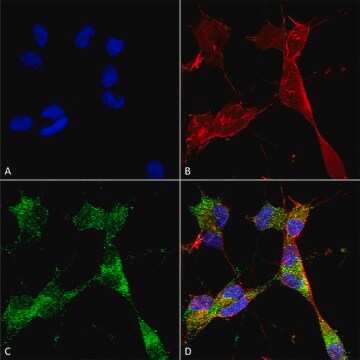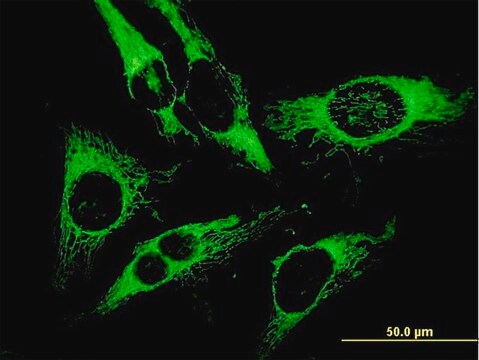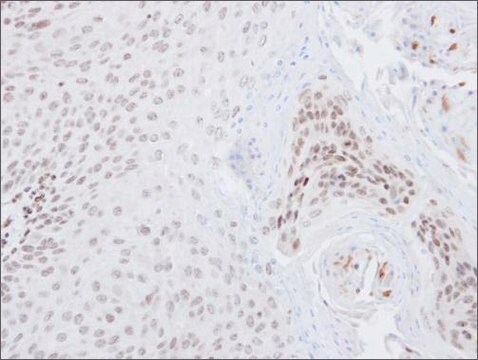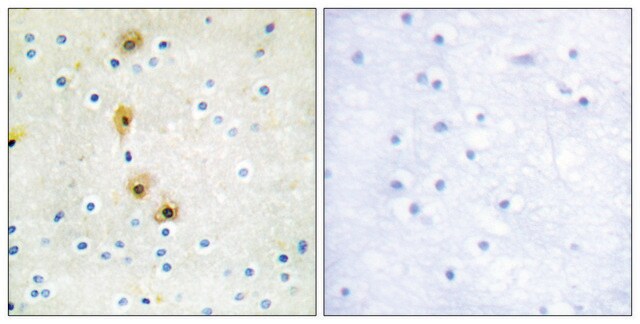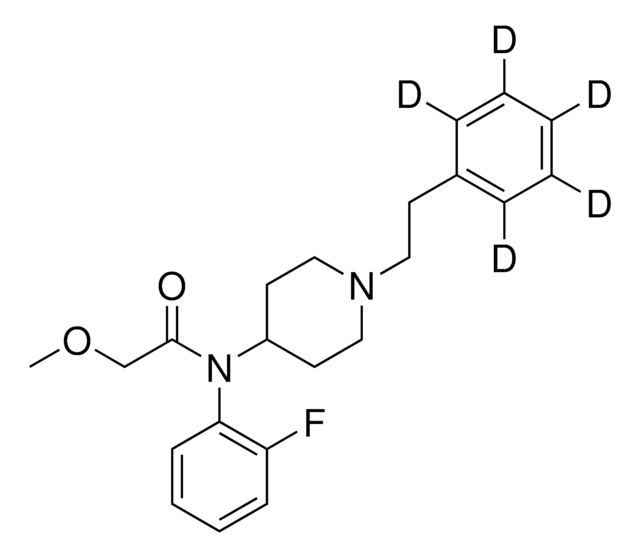MABC186-I
Anti-phospho-p62 (Ser403) Antibody, clone 4F6
clone 4F6, from rat
Sinonimo/i:
Ubiquitin-binding protein p62, p62, EBI3-associated protein of 60 kDa, EBIAP, p60, Phosphotyrosine-independent ligand for the Lck SH2 domain of 62 kDa
About This Item
WB
western blot: suitable
Prodotti consigliati
Origine biologica
rat
Livello qualitativo
Forma dell’anticorpo
purified immunoglobulin
Tipo di anticorpo
primary antibodies
Clone
4F6, monoclonal
Reattività contro le specie
human, mouse
tecniche
immunohistochemistry: suitable
western blot: suitable
Isotipo
IgG2aκ
N° accesso NCBI
N° accesso UniProt
Condizioni di spedizione
ambient
modifica post-traduzionali bersaglio
phosphorylation (pSer403)
Informazioni sul gene
human ... SQSTM1(8878)
Descrizione generale
Specificità
Immunogeno
Applicazioni
Immunohistochemistry Analysis: A representative lot detected p62/SQSTM1 (Ser403) in a Immunohistochemistry application. (Matsumoto, G., et. al. (2011). Mol Cell. 44(2):279-289).
Qualità
Western Blotting Analysis: 0.5 µg/mL of this antibody detected p62/SQSTM1 (Ser403) in Neuro2a cells in which GFP fused human p62 (G-p62) was stably transfected and treated with MG132 vs. an untreated sample.
Descrizione del bersaglio
Stato fisico
Altre note
Non trovi il prodotto giusto?
Prova il nostro Motore di ricerca dei prodotti.
Codice della classe di stoccaggio
12 - Non Combustible Liquids
Classe di pericolosità dell'acqua (WGK)
WGK 1
Certificati d'analisi (COA)
Cerca il Certificati d'analisi (COA) digitando il numero di lotto/batch corrispondente. I numeri di lotto o di batch sono stampati sull'etichetta dei prodotti dopo la parola ‘Lotto’ o ‘Batch’.
Possiedi già questo prodotto?
I documenti relativi ai prodotti acquistati recentemente sono disponibili nell’Archivio dei documenti.
Il team dei nostri ricercatori vanta grande esperienza in tutte le aree della ricerca quali Life Science, scienza dei materiali, sintesi chimica, cromatografia, discipline analitiche, ecc..
Contatta l'Assistenza Tecnica.